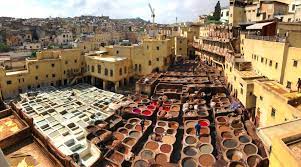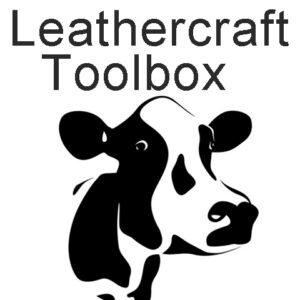The leather industry is worth over $450 Billion annually. Its largest sectors include automotive interiors, footwear, furniture, clothing, fashion and protective equipment. But what happens to all the leather offcuts and waste from these industries? Could recycled leather be the answer?
Recycled leather is leather is made up of offcuts and shredded leather pieces that are meshed together to form a pulp. It consists of about 60% real leather. The other 30% is made up of binders and rubber coating. The remaining 10% is made of a water based polyurethane coating which helps produce “leather” sheets.
The leather industry generates an extraordinary amount of waste every year. It is estimated that about 800 000 tons of leather waste ends up in landfills annually. That seems like a lot of leather going to waste? Could these offcuts possibly be recycled and re-used to reduce the amount waste ending up in landfills? Recycled leather could be the answer to this problem.
What is recycled leather.
Recycled leather is made up of 60% leather offcuts, strips, straps and shredded leather pieces that were destined to be thrown away. These offcuts and unused scraps are collected and taken to companies that specialize in recycling leather. These offcuts and scraps are then further shredded into tiny bits and cleaned. Next a binder agent is added to bind the shreds together to form a pulp. A binder such as rubber or tree bark is usually used so that the shredded bits can stick together and so it’s also easier to work with. Next a texture and colour is added to give the leather a more realistic look and feel. The are a wide variety of textures and colours available depending on the desired look required. The final step is where a clear polyurethane layer or backing is added to help form the sheet or “hide”. Recycled leather is actually a bonded leather by definition, but it definitely offers a solution to reduce the amount of leather wastage going to landfills. If you would like to get in touch with a recycling leather company, check out Recyc leather They have been around since 2017 and have done some amazing collaborations with big brands to promote the use of recycled leather.
Why use recycled leather.
Today’s consumer is more socially and environmentally aware of our limited resources and the impact industries have on the planet. They seek out companies that stand by these values. Companies that are trying to make a difference. If you share these values then it makes sense that you, the customer look for companies that align with your values.

The production of recycled leather is a lot less damaging to the environment and less intensive than the leather tanning industry. It also uses less harmful chemicals that won’t affect the environment. The amount of water used is also significantly less.
Making use of discarded leather significantly reduces the amount of leather that would otherwise end up in landfills. This is a huge benefit to the environment and planet. The tanning industry takes a toll on the environment as all sorts of chemicals are used as well as plenty of water.
Another factor to consider is the cost of recycled leather. It’s much cheaper than full grain, top grain and genuine leather. It is noted that full grain leather is a superior product and worth every penny, but what value can you place on helping reduce waste in landfills?
Advantages And Disadvantages of recycling leather.
The main advantage is that it removes, and re-uses leather offcuts destined for the landfill and turns it into a useable product. Its’s cheaper to produce than full and top grain leather. It comes in a wide variety of colours and textures. It is also much thinner than real leather and therefore lighter. It is also easy to clean and maintain.
| Advantages | Disadvantages |
| reduces the amount of waste destined landfills. | Is not as long lasting or durable a real leather. |
| It’s cheaper to produce than full grain leather. | Is only made up of 60% leather. |
| Available in many colours and textures. | Not as strong as real leather. |
| Much thinner and lighter than genuine leather. | Can only be produced in one thickness. |
| Production process is less harmful to the environment. | Will have to be replaced every few years. |
| Easy to clean and maintain | Certain cleaning chemicals can damage leather surface |
If you would like to know more about recycling leather then check out my previous post on can you recycle leather. where i discuss the different methods of recycling and re-using leather.

Is recycled leather the same as PU leather.
No, they are completely different products. Recycled leather is basically a bonded leather that uses 50-60% real leather. PU leather doesn’t contain any real leather and is essentially a plastic. It’s comprised of polyurethane which is a thermoplastic polymer. It can have a texture and look similar to real leather, but it is inferior on every level. Plastic is harmful to the environment and it’s a product that creates more waste for the landfill.
Conclusion
Recycled leather is not 100% real leather, but it definitely has a role to play in cleaning up the industry and can help alleviate the enormous waste/ landfill problem. Is it as good as full grain leather? No, it’s not, but it has other advantages over real leather such cost, maintenance and environmental benefits that make it a product of the future that will improve and get better over time. Thanks for reading.
